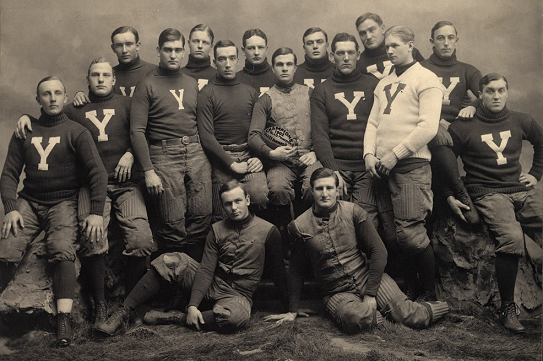

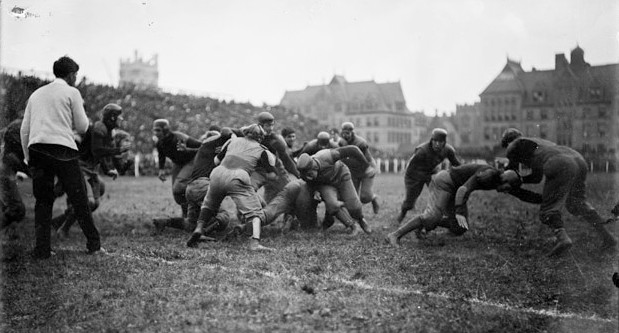

| Trinity-Connecticut (0-4) | 40-0 | |
| Tufts (4-6-1) | 34-6 | |
| Amherst (7-3) | 23-0 | #11 |
| Wesleyan (3-6-1) | 35-0 | |
| at Brown (5-4-1) | 10-0 | #14 |
| Vermont (5-3-2) | 32-0 | |
| Penn State (7-3) | 11-0 | (#26-33) |
| Syracuse (6-2-1) | 24-0 | #10 |
| at Army (6-1-1) | 6-6 | #4 |
| Bucknell (6-4) | 36-5 | |
| at Princeton (8-1) | 12-5 | #5 |
| Harvard (11-1) | 23-0 | #3 |
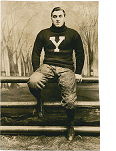 The
son of a wealthy family from Minnesota, Tom Shevlin dressed in
expensive clothes, carried a gold-headed cane, and in a time when cars
were new, he had the best and most expensive in town. He liked to race
it and once had a warrant issued for his arrest for reckless driving.
The most famous football player of his time, and probably the biggest
celebrity in general, there are a lot of great stories about Shevlin,
some of which are recounted in summary in his Wikipedia
article.
The
son of a wealthy family from Minnesota, Tom Shevlin dressed in
expensive clothes, carried a gold-headed cane, and in a time when cars
were new, he had the best and most expensive in town. He liked to race
it and once had a warrant issued for his arrest for reckless driving.
The most famous football player of his time, and probably the biggest
celebrity in general, there are a lot of great stories about Shevlin,
some of which are recounted in summary in his Wikipedia
article.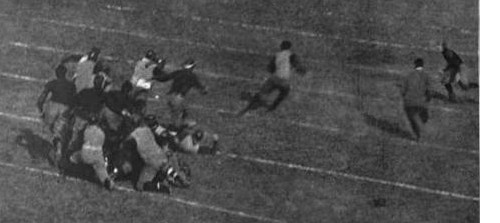
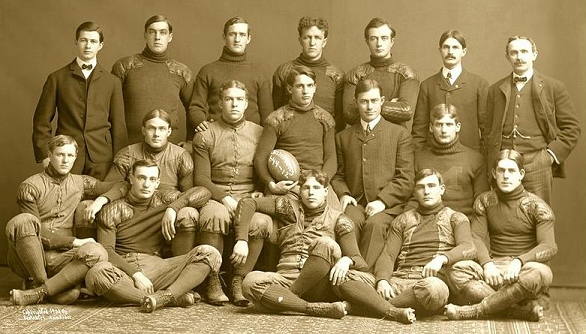
| Albion (4-6) | 88-0 | |
| Case (6-3) | 48-6 | |
| Michigan State (1-5-1) | 119-0 | |
| Indiana (3-5-1) | 60-0 | |
| (neutral site) Notre Dame (6-2-1) | 23-0 | #21 |
| Ohio State (6-2-2) | 86-0 | |
| (neutral site) Wisconsin (6-3) | 6-0 | #9 |
| Iowa (5-4) | 107-0 | |
| at Chicago (14-1) | 21-0 | #7 |
| Oberlin (4-4) | 63-0 | |
| Minnesota (9-2-1) | 23-6 | #8 |

| Yale 11-0-1 | Michigan 11-0 | |||||||||||||||||||||||||||||||
|---|---|---|---|---|---|---|---|---|---|---|---|---|---|---|---|---|---|---|---|---|---|---|---|---|---|---|---|---|---|---|---|---|
|
|
|||||||||||||||||||||||||||||||
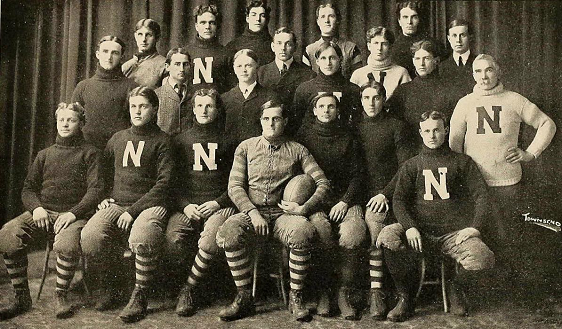
| Lincoln High School | 27-0 | |
| Doane (2-3) | 51-0 | |
| at Colorado (5-1) | 10-0 | (#26-33) |
| Grinnell (2-7-2) | 17-0 | |
| at Minnesota (9-2-1) | 6-0 | #8 |
| (neutral site) Missouri (5-3) | 12-0 | |
| Haskell (8-2-1) | 28-0 | |
| Kansas (6-4) | 16-0 | |
| Knox (9-2) | 7-0 | #19 |
| Northwestern (6-6) | 12-0 |
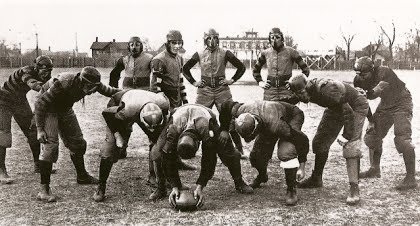
| 1) Billingsley (math system) | 4.6 |
| 2)
Houlgate (math) National Championship Foundation Helms | 2.7 2.7 2.7 |
| 5) Parke Davis | 2.5 |